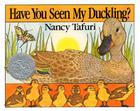How can I have gone this long without ever reading One Morning in Maine? A shocking lapse. The first picture you've posted does feel very Eleanor and Isabel. Clearly, a book we need to read in this house.
I'm sure you've heard in the last few days about the recent publication of a big study on gender disparity in children's books: "Gender in Twentieth-Century Children's Books : Patterns of Disparity in Titles and Central Characters." It's an interesting study, though a little dry to read. There's a good summary of the findings here, at Science Daily (thanks to Jessica@Vegbooks, who posted the url in a comment).
The main ideas: there are measurably more male characters than female characters in children's books, and female representation has not increased steadily over the last century. The statistics are pretty staggering. From Science Daily: "No more than 33 percent of children's books published in any given year contain central characters that are adult women or female animals, but adult men and male animals appear in up to 100 percent of books."
It's interesting to me that the study finds more gender bias in books centered on animal characters than human ones. Science Daily again: "Although books published in the 1990s came close to parity for human characters (with a ratio of 0.9:1 for child characters; 1.2:1 for adult characters), a significant disparity of nearly 2 to 1 remains for male animal characters versus female."
 I was first alerted to the study via an NYT blog post, which summarizes the findings but gets at least one fact wrong: the author claims that Make Way for Ducklings is the only Caldecott winner with a central female figure. The study actually refers to the book Have You Seen My Duckling?, by Nancy Tafuri, and says this about it:
I was first alerted to the study via an NYT blog post, which summarizes the findings but gets at least one fact wrong: the author claims that Make Way for Ducklings is the only Caldecott winner with a central female figure. The study actually refers to the book Have You Seen My Duckling?, by Nancy Tafuri, and says this about it:A closer look at the types of characters with the greatest disparity reveals that only one Caldecott winner has a female animal as a central character without any male central characters. The 1985 Honor book Have You Seen My Duckling? follows Mother Duck asking other pond animals this question as she searches for a missing duckling. One other Caldecott has a female animal without a male animal also in a central role; however, in Officer Buckle and Gloria, the female dog is present alongside a male police officer. Although female animal characters do exist, books with male animals, such as Barkley (mentioned earlier) and The Poky Little Puppy, were more than two-and-a-half times more common across the century than those with female animals.
I'm curious to hear your reaction to this study. We've written a lot here about gender in children's books, and finding strong female characters (check out some of our book lists, too). Do you feel this disparity actively as a bookseller and book-buyer? Do you think that the gender of animal characters is more or less influential than the gender of human characters?
Love, Annie

Is the study American-only? Because there sure are a lotta British classic writers who featured female animals, from Beatrix Potter (who was pretty even in her gender distribution) to Anna Sewell.
ReplyDeleteThe Little Grey Rabbit series (from the 1970s, I think) also featured two main female animal characters and one male animal characters. Admittedly, Little Grey Rabbit (female) was in charge of taking care of the vain Squirrel (female) and the feckless Hare (male), so the series didn't strike much of a blow for domestic liberation. But still. Women in charge!
I'm looking at a list of Caldicotts and I'm finding that I don't remember a lot of them, oops. But isn't Mirette the main character in Mirette on the High Wire? I vaguely remember some old guy teaching her. Lon Po Po also stars females. Sam, Bangs, and Moonshine is another girl book. These are all people stories, though.
ReplyDeleteIn our house Have You Seen My Duckling had boy and girl leads, because we named the lost duckling after my oldest and much of the reading time centered around finding the Alexander Duckling and seeing what mischief he got into.
I had completely missed the fact that the book the study referred to was actually Nancy Tafuri's Have You Seen My Duckling? Being a wildlife enthusiast, that's one of my favorites, but I'd never thought of it in terms of gender. Thanks for the heads up!
ReplyDelete@ Caroline and Beth: The study's authors introduce Have You Seen My Duckling by saying this: "only one Caldecott winner has a female animal as a central character without any male central characters." So while Mirette is a major character, because of Bellini's role as her teacher, their book doesn't count.
ReplyDeleteOn the one hand, I think this is a little bit of a weird way to consider gender in books -- there are lots of awesome female characters in books which also contain male characters. On the other hand, the study points out that there are LOTS of books with major male characters which don't have any female characters at all.
The study seems to have been talking about central female animal characters with the reference to Have You Seen My Duckling. I'd argue that Genevieve, the dog in Madeline's Rescue, would rate as a female animal central character. But we could be splitting hairs here.
ReplyDelete